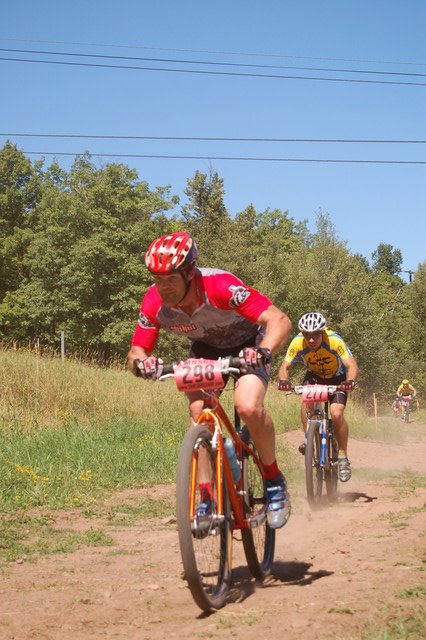 It took me awhile, my head had to clear, but now I get it...The Chequamegon 100 was based on Montessorian Doctrine...A stroke of pure genius!!!!
It took me awhile, my head had to clear, but now I get it...The Chequamegon 100 was based on Montessorian Doctrine...A stroke of pure genius!!!!“The greatest sign of success for a race director... is to be able to say, "The racers are now working as if I did not exist."” Dr. Montessori
“Never help a bike racer with a task at which he feels he can succeed.” Dr. Montessori
“If help and salvation are to come, they can only come from the cyclist, for the cyclists are the makers of races.” Dr. Montessori
“We cannot know the consequences of suppressing a cyclist's spontaneity when he is just beginning to be active. We may even suffocate life itself. That humanity which is revealed in all its intellectual splendor during the sweet and tender age of the early racing season should be respected with a kind of religious veneration. It is like the sun which appears at dawn or a flower just beginning to bloom. A long race through single-track cannot be effective unless it helps a racer to open up himself to life.” Dr. Montessori
"We cannot create observers by saying "observe," but by giving them the power and the means for this observation and these means are procured through education of the senses. Give your racers incomplete maps and let the magic unfold...” Dr. Montessori
“And so we discovered that long distance mountain bike racing is not something which the race director does, but that it is a natural process which develops spontaneously in the racers themselves.” Dr. Montessori
"The race organizer must derive not only the capacity, but the desire, to observe natural phenomena. In the Montessori system of bike racing, she/he must become a passive, much more than an active, influence, and her passivity shall be composed of anxious scientific curiosity and of absolute respect for the phenomenon which she wishes to observe, which may include confusion, even anarchy. The race organizer must understand and feel her position of observer: the activity must lie in the phenomenon of the unknown.” Dr. Montessori
Two especially relevant and applicable Montessorian Concepts....
• Inner guidance of nature. All racers have inherent inner directives from nature that guide their true normal development. Free your racers from the bounds of strict adherence to course directives...
• Freedom for self-directed course making. The Montessori method respects individual liberty of racers to choose their own activities and their own paths. This freedom allows racers to follow their inner guidance for self-directed racing...
A full race report to follow soon...But I totally get it NOW!!! And it was a big-time challenge...and lotz of great comradeship!!! Seriously, I had a fine time for over nine hours on great single track with top notch like-minded folks...Then I was a little "shaky" for the next three (due to thirst), then I had another great time on the way home with my good buddy, Jeremy Kershaw!!!


